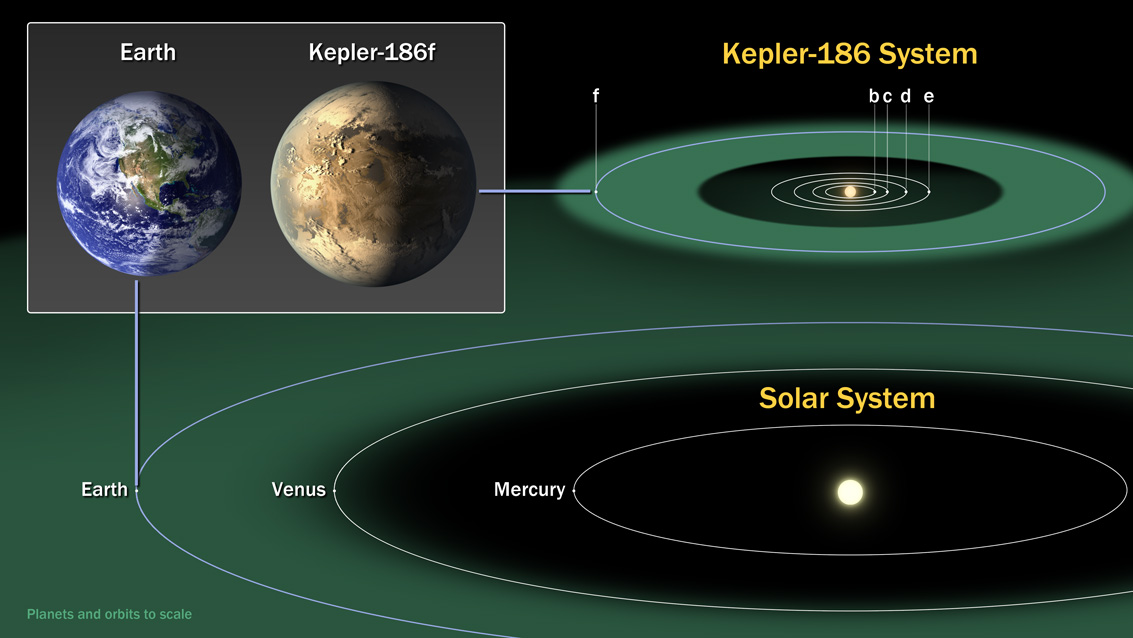Astronomers using NASA's Kepler Space Telescope report discovery of the first Earth-size planet orbiting a star in the "habitable zone" -- the range of distance from a star where liquid water might pool on the surface of an orbiting planet.
The discovery of Kepler-186f confirms that planets the size of Earth exist in the habitable zone of stars other than our sun. While planets have previously been found in the habitable zone, they are all at least 40 percent larger in size than Earth and understanding their makeup is challenging. Kepler-186f is more reminiscent of Earth.
Notre Dame astrophysicist Justin R. Crepp is among researchers from NASA working with the Kepler space mission and helped detect the Earth-like planet, 1.11 times the size of our planet.
Kepler-186f is part of a multi-planet system around the star Kepler-186 which has five planets, one of which is in the center of the habitable zone—the region around a star within which a planet can sustain liquid water on its surface. While there have been other discoveries of Earth-sized and smaller planets, those planets have been found in orbits that are too close to their host stars for water to exist in liquid form. Findings taken from three years of data show that the intensity and spectrum of radiation from Kepler-186f indicate that the planet could have an Earth-like atmosphere and water at its surface which is likely to be in liquid form.
Credit: NASA Ames/SETI Institute/JPL-Caltech
The diagram above compares the planets of our inner solar system to Kepler-186, a five-planet star system about 500 light-years from Earth in the constellation Cygnus. The five planets of Kepler-186 orbit an M dwarf, a star that is is half the size and mass of the sun.
The Kepler-186 system is home to Kepler-186f, the first validated Earth-size planet orbiting a distant star in the habitable zone—a range of distance from a star where liquid water might pool on the planet's surface. The discovery of Kepler-186f confirms that Earth-size planets exist in the habitable zones of other stars and signals a significant step toward finding a world similar to Earth.
The size of Kepler-186f is known to be less ten percent larger than Earth, but its mass and composition are not known. Kepler-186f orbits its star once every 130 days, receiving one- third the heat energy that Earth does from the sun. This places the planet near the outer edge of the habitable zone.
The inner four companion planets each measure less than fifty percent the size of Earth. Kepler-186b, Kepler-186c, Kepler-186d and Kepler-186, orbit every 4, 7, 13 and 22 days, respectively, making them very hot and inhospitable for life as we know it.
The Kepler space telescope infers the existence of a planet by the amount of starlight blocked when it passes in front of its star. From these data, a planet's radius, orbital period and the amount of energy recieved from the host star can be determined.
"The host star, Kepler 186, is an M1-type dwarf star which means it will burn hydrogen forever, so there is ample opportunity to develop life around this particular star and because it has just the right orbital period water may exist in a liquid phase on this planet," said Crepp who is the Frank M. Freimann Assistant Professor of Physics in the College of Science.
Crepp is building an instrument at Notre Dame named named "iLocater" that will be the first ultra-precise Doppler spectrometer to be fiber-fed and operated behind an adaptive optics system. His instrument, to be installed at the Large Binocular Telescope in Arizona, will identify terrestrial planets orbiting in the habitable zone of nearby M-dwarf stars, much closer to the Sun than Kepler-186, by achieving unprecedented radial velocity precision at near-infrared wavelengths. He and his research collaborators will also probe nearby terrestrial planets to tell what their atmospheres are made of.
Credit: NASA Ames/SETI Institute/JPL-Caltech
Crepp is one of only 11 Kepler Participating Scientists in the country. He and his colleagues are advancing the goals of the Kepler Mission by seeking to find terrestrial planets comparable in size to Earth, especially those in the habitable zone of their stars where liquid water exists and where life may be sustained.







Comments